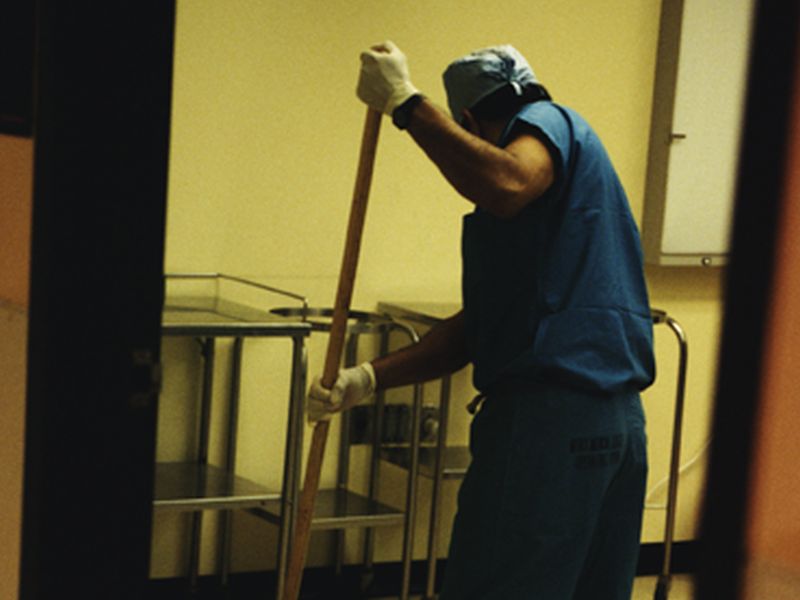

Hospital Room Floors May Harbor 'Superbugs'
But that area often overlooked when it comes to infection control, researchers sayThursday, March 2, 2017

THURSDAY, March 2, 2017 (HealthDay News) -- Hospital room floors may be more of a "superbug" threat than many hospital staffers realize, new research suggests.
"Efforts to improve disinfection in the hospital environment usually focus on surfaces that are frequently touched by the hands of health care workers or patients," explained lead researcher Dr. Abhishek Deshpande, from the Cleveland Clinic, in Ohio.
"Although health care facility floors are often heavily contaminated, limited attention has been paid to disinfection of floors because they are not frequently touched," Deshpande added.
Yet, items in a patient's room can come into contact with the floor, which can lead to the transfer of multidrug-resistant bacteria to hands, clothing, call buttons, medical devices, linens and medical supplies, the researchers explained.
In their study, the team took samples from the floors of 159 patient rooms in five Cleveland-area hospitals and found that many were contaminated with infection-causing bacteria, including methicillin-resistant Staphylococcus aureus (MRSA), vancomycin-resistant enterococci (VRE), and Clostridium difficile.
The researchers also found that 41 percent of patient-occupied rooms had one or more "high-touch" objects in contact with the floor, including personal items, medical devices and medical supplies. MRSA, VRE and C. difficile were found on 18 percent, 6 percent and 3 percent, respectively, of bare or gloved hands that handled the items.
The findings were published in the March issue of the American Journal of Infection Control.
"The results of our study suggest that floors in hospital rooms could be an underappreciated source for dissemination of pathogens [bacteria] and are an important area for additional research," Deshpande said in a journal news release.
Floors may not be the only place that is overlooked in hospitals when it comes to the presence of superbugs.
A study published this week in the journal Applied and Environmental Microbiology found that germs colonize in drainpipes and can gradually make their way into sinks. Once there, they can spread to hospital staffers' hands and clothing, and eventually patients, the University of Virginia researchers said.
SOURCE: American Journal of Infection Control, news release, Feb. 27, 2017
HealthDay
Copyright (c) 2017 HealthDay. All rights reserved.
News stories are written and provided by HealthDay and do not reflect federal policy, the views of MedlinePlus, the National Library of Medicine, the National Institutes of Health, or the U.S. Department of Health and Human Services.
- More Health News on:
- Bacterial Infections
- Health Facilities
- Infection Control








































No hay comentarios:
Publicar un comentario